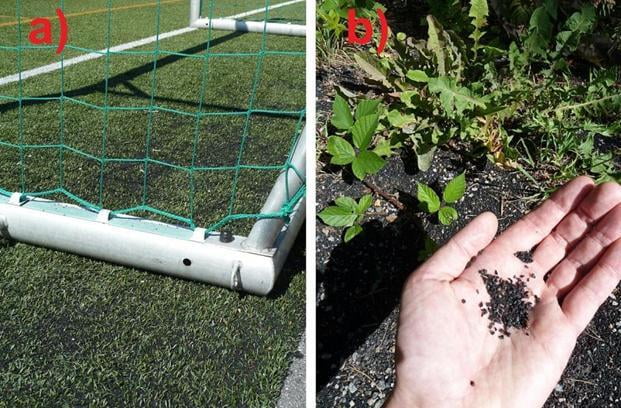The millions of tons of plastic swimming in the world's oceans has attracted a lot of media attention. The latest report shows that plastic pollution may pose a more serious threat to terrestrial plants and animals, including humans, than its impact on the oceans.
Every day, only a tiny fraction of the plastic waste people throw away is recycled or incinerated in waste-to-energy facilities to generate electricity. Most plastic waste goes to landfills, where it spends up to 1,000 years decomposing and releasing potentially toxic substances that leach into the soil and water as it breaks down.
Recently, German researchers released a report saying that microplastics in soil, sediment and freshwater will have a long-term negative impact on ecosystems.
Terrestrial microplastic pollution is much more serious than marine microplastic pollution. It is estimated that the level of microplastic pollution on land is 4 to 23 times higher than that in the ocean under different environments.

The researchers concluded that although there is not much research in this area, the results obtained so far are worrying: currently, plastic debris is scattered around the world and may have many negative effects.
According to research estimates, about one-third of plastic waste ends up in soil or fresh water, most of which breaks down into microplastic particles smaller than five millimeters and further into nanoparticles (particles smaller than 0.1 microns). The problem is that these particles are entering the food chain.
How do microplastics get into the water?
It is estimated that in 2019, 150 trillion microfibers are present in the global ocean. One of the main ways microplastics enter water sources is through people's clothing. Tiny acrylic, nylon, spandex and polyester fibers can be shed when people wash their clothes and flow to wastewater treatment plants or be released into the open environment.
A study cited in Water World in 2016 showed that a washing machine can flush more than 700,000 tiny plastic fibers into the environment over the course of its lifetime. Studies have not been conducted on hand washing, which is more common in developing countries, but it is possible that hand washing could have a similarly important impact.
Also in 2016, clothing company Pantagna commissioned another study by researchers at the University of California, Santa Barbara. They found that washing a jacket alone released an average of 1.7 grams of microfibers.
Sewage carries microplastics into the soil
Sewage is one of the most important factors in studying the distribution of microplastics. The study says that 80 to 90 percent of plastic particles in sewage (such as those from clothing fibers) will always be present in the sludge. Since people often use sewage sludge as fertilizer for their fields, this means that thousands of tons of new microplastics are added to our soil every year. The report says microplastics are even in tap water.
In addition, tiny plastic fragments may carry disease-causing microorganisms on their surfaces and become disease mediators in the environment. Microplastics also interact with soil fauna, affecting soil animal health and soil function. An article in Science Daily describing the report said, "In the case of earthworms, for example, when microplastics are present in the soil, the earthworms burrow in new ways. This affects both the health of the earthworms and changes the condition of the soil."
Microplastic Pollution Causes Decline in Subsurface Biological Population
In 2020, researchers published the first study of how microplastics affect soil fauna in the Proceedings of the Royal Society. The paper noted that terrestrial microplastic pollution led to a decline in the number of subsurface-dwelling species, including mites, larvae and other small organisms that maintain soil fertility.
Chlorinated plastics can release toxic chemicals into the surrounding soil. These substances seep into groundwater or nearby water sources and can also enter the ecosystem, causing a range of potentially harmful effects on the species that drink from that water source.

In general, plastic pellets acquire new physical and chemical properties as they decompose, and the potential for toxic effects on organisms increases. Moreover, the greater the number of potentially affected species and ecological functions, the greater the likelihood of toxic effects of plastic pellets.
The chemical effects of the decomposition phase are particularly harmful. Additives such as phthalates and BPA (also known as BPA) are leached from plastic particles during the decomposition phase (a natural process that causes significant loss of nutrients from the soil) and are best known for their hormonal effects that can disrupt the hormone systems of vertebrates and invertebrates. In addition, nanoparticles may trigger inflammation, cross cellular barriers, and even cross membranes as highly selective as the blood-brain barrier or the placenta. Upon entry into cells, they may also lead to changes in gene expression and biochemical responses, among other things.
The long-term effects of these changes have not been adequately studied by scientists. Even so, says the Leibniz Institute for Freshwater Ecology and Inland Fisheries, "there is evidence that nanoplastics alter fish behavior when they pass the blood-brain barrier."

